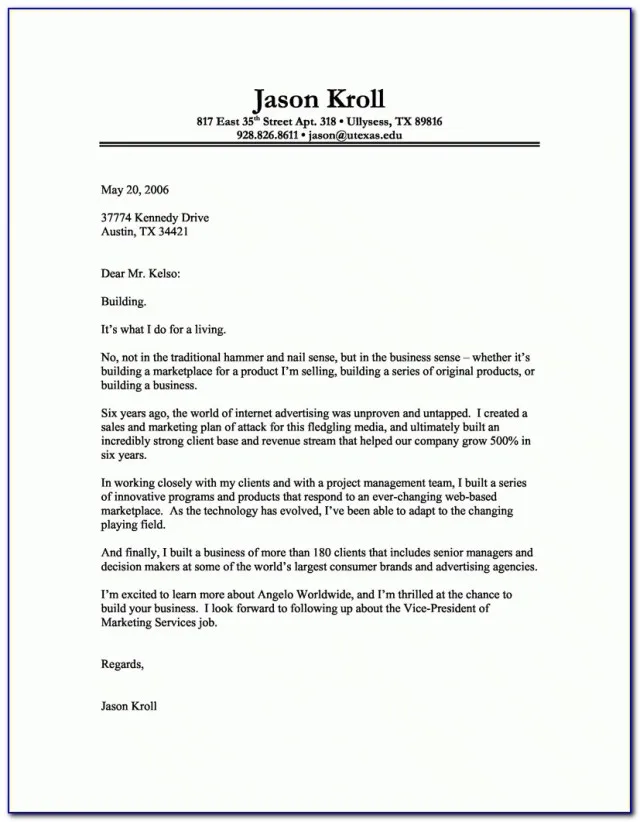Why a Cover Letter Matters
In the competitive world of job applications, a well-crafted cover letter can be your secret weapon. It’s your first chance to make a positive impression, offering a personalized introduction that goes beyond the information on your resume. A strong cover letter can significantly increase your chances of getting noticed by a hiring manager, setting you apart from other applicants. It demonstrates your communication skills, enthusiasm, and genuine interest in the role and the company. Many employers consider a cover letter essential, using it as a key factor in their initial screening process to assess a candidate’s fit and qualifications. A compelling cover letter shows you’ve taken the time to understand the role and how your skills align with their needs, making it a crucial tool in your job search arsenal. Ignoring a cover letter, where requested, can signal a lack of attention to detail, and may lead to your application being immediately dismissed. The cover letter is your opportunity to shine, so make the most of it.
Understanding the Purpose of a Cover Letter
The primary goal of a cover letter is to secure an interview. Unlike your resume, which provides a factual overview of your experience, a cover letter allows you to tell a story. This story connects your skills and experiences to the specific requirements of the job, highlighting your value and demonstrating your understanding of the company’s needs. It should also provide insights into your personality and work ethic, qualities that are difficult to convey through a resume alone. Consider it a marketing tool, designed to sell yourself to the hiring manager. Your cover letter offers a platform to express your passion for the role and the company, building a personal connection that will motivate the hiring manager to meet you. The tone and approach you adopt will depend on the industry, the company culture, and the specifics of the role for which you are applying. Tailoring your letter ensures that your application is as relevant and compelling as possible, making it a crucial step in the job application process.
Key Components of a Cover Letter

A well-structured cover letter typically includes several key components designed to capture the reader’s attention and provide essential information. Begin with a professional header, including your contact information and the date, as well as the recipient’s details. Next, use a personalized greeting to establish a connection, avoiding generic phrases like “To Whom It May Concern.” The opening paragraph should immediately grab the reader’s attention, stating your purpose and briefly explaining why you are interested in the position. The body of the letter should then highlight your relevant skills and experiences, providing specific examples to support your claims. Finally, conclude with a strong closing paragraph, expressing your gratitude for the opportunity and clearly stating your next steps. Each section plays a vital role in creating a compelling and persuasive cover letter that showcases your candidacy and increases your chances of landing an interview. Structure, content, and tone are extremely important.
Header and Contact Information
Your header should include your full name, address, phone number, and email address. This information should be prominently displayed at the top of your cover letter. Following this, include the date and the recipient’s information, if known. If you know the hiring manager’s name and title, address your letter to them directly to personalize your communication. Including the date is also essential, as this demonstrates that your application is current. Make sure your contact information is accurate and professional; use a professional-sounding email address and ensure your voicemail is set up correctly. If you are applying for a job through an online portal, make sure the header information in your cover letter matches what you have entered into the portal. Accuracy and attention to detail in this section are crucial, as they are fundamental to ensuring that the hiring manager can easily reach you for the next steps in the application process.
Personalized Greeting
Always aim to personalize your greeting. Research the hiring manager’s name or the name of the person who will be reading the cover letter. Addressing the letter to a specific person shows initiative and attention to detail, demonstrating that you have taken the time to research the company and the role. If you are unable to find a specific name, use a more formal greeting such as “Dear Hiring Manager” rather than resorting to generic greetings like “To Whom It May Concern”. Ensure you use the correct title (Mr., Ms., Dr., etc.). These small details can make a significant difference in creating a positive first impression. By personalizing your greeting, you immediately establish a level of connection and demonstrate your genuine interest in the opportunity. This also helps to make the letter feel more genuine and less generic, which can help it stand out from other applications.
Crafting a Compelling Opening Paragraph
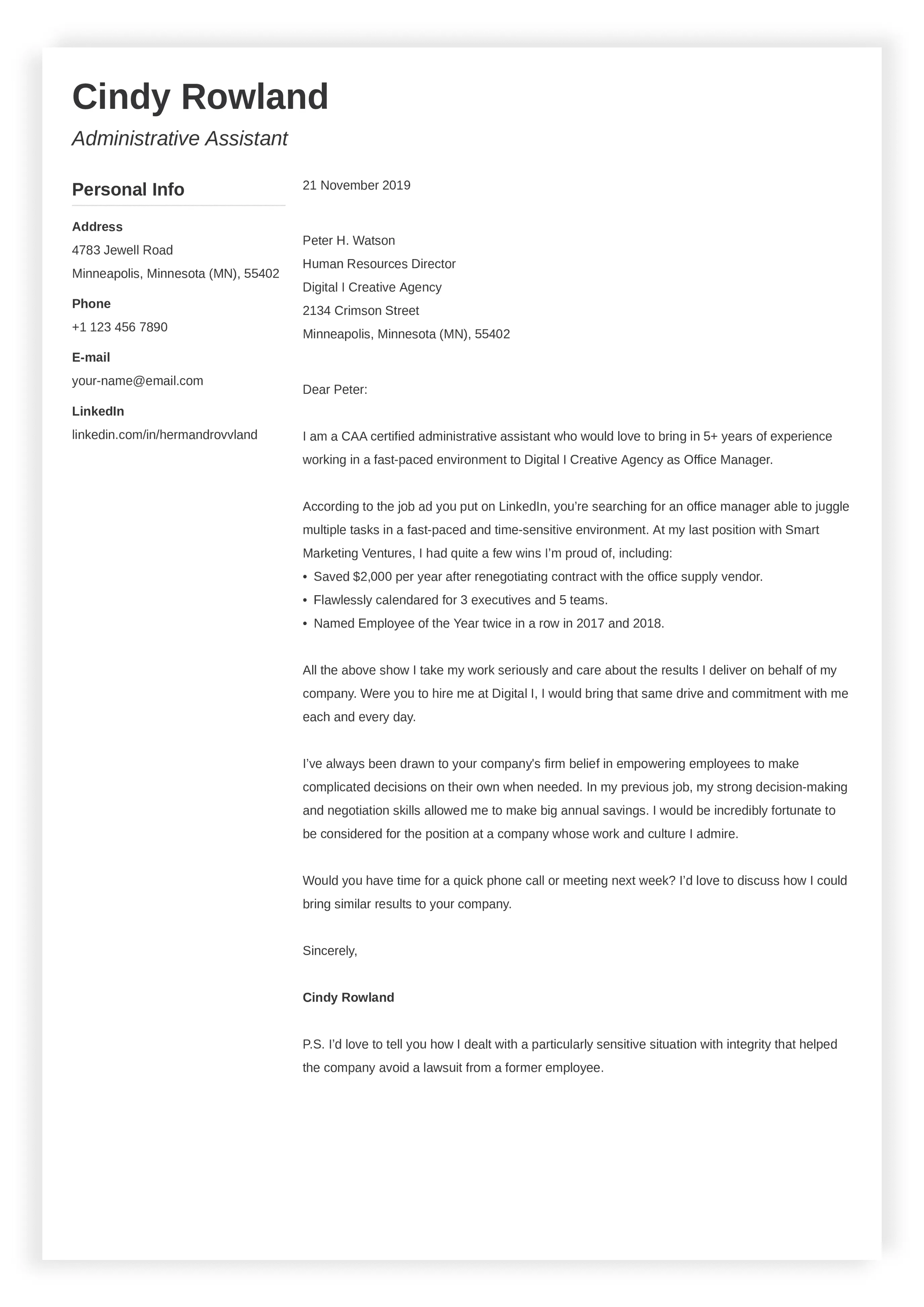
Your opening paragraph is your first and most important opportunity to capture the reader’s attention. It should briefly state the position you are applying for and, most importantly, immediately convey why you are interested. Highlight your enthusiasm and passion for the opportunity, connecting your skills and experience to the requirements of the job. Mentioning how you found the job opening can also be beneficial, showing that you pay attention to the company. This introduction should be concise, typically no more than three to four sentences, and it should clearly and concisely state your intention and interest in the position. Make it clear what value you are bringing to the table, or what you can add to the company. Consider it your first chance to sell yourself to the hiring manager. The opening paragraph sets the tone for the entire letter, so making it engaging is key to getting your application noticed.
Highlighting Relevant Skills and Experience
The body of your cover letter should highlight your relevant skills and experience. Instead of simply listing your responsibilities, focus on demonstrating how your skills and experiences align with the specific requirements of the job. Use specific examples and achievements to back up your claims. It is essential to provide concrete evidence of your ability to succeed in the role. Review the job description carefully and identify the key skills and qualifications the employer is seeking. Then, in your cover letter, describe how your past experiences have prepared you to meet those needs. Use strong action verbs to showcase your accomplishments, and provide quantifiable results whenever possible. This will show the hiring manager not only what you did but also what you achieved. By showcasing how you have successfully used your skills in the past, you provide assurance that you can contribute to the company’s success.
Tailoring Your Letter to the Job
Tailoring your cover letter to each job application is vital. Generic cover letters are easy to spot and often end up in the rejection pile. Instead, customize your letter to fit the specific requirements and needs of each position. Analyze the job description carefully and use the same keywords and phrases the employer uses to describe the role. This approach demonstrates that you have taken the time to understand the position and the company’s needs. Show how your skills and experiences align with their specific requirements. Provide examples that directly relate to the responsibilities and duties outlined in the job description. Make sure that you research the company and its culture to tailor your letter. This personalization shows the hiring manager that you are genuinely interested in the specific job and the organization. A tailored cover letter makes your application relevant and compelling, increasing your chances of making a positive impression.
Quantifying Achievements
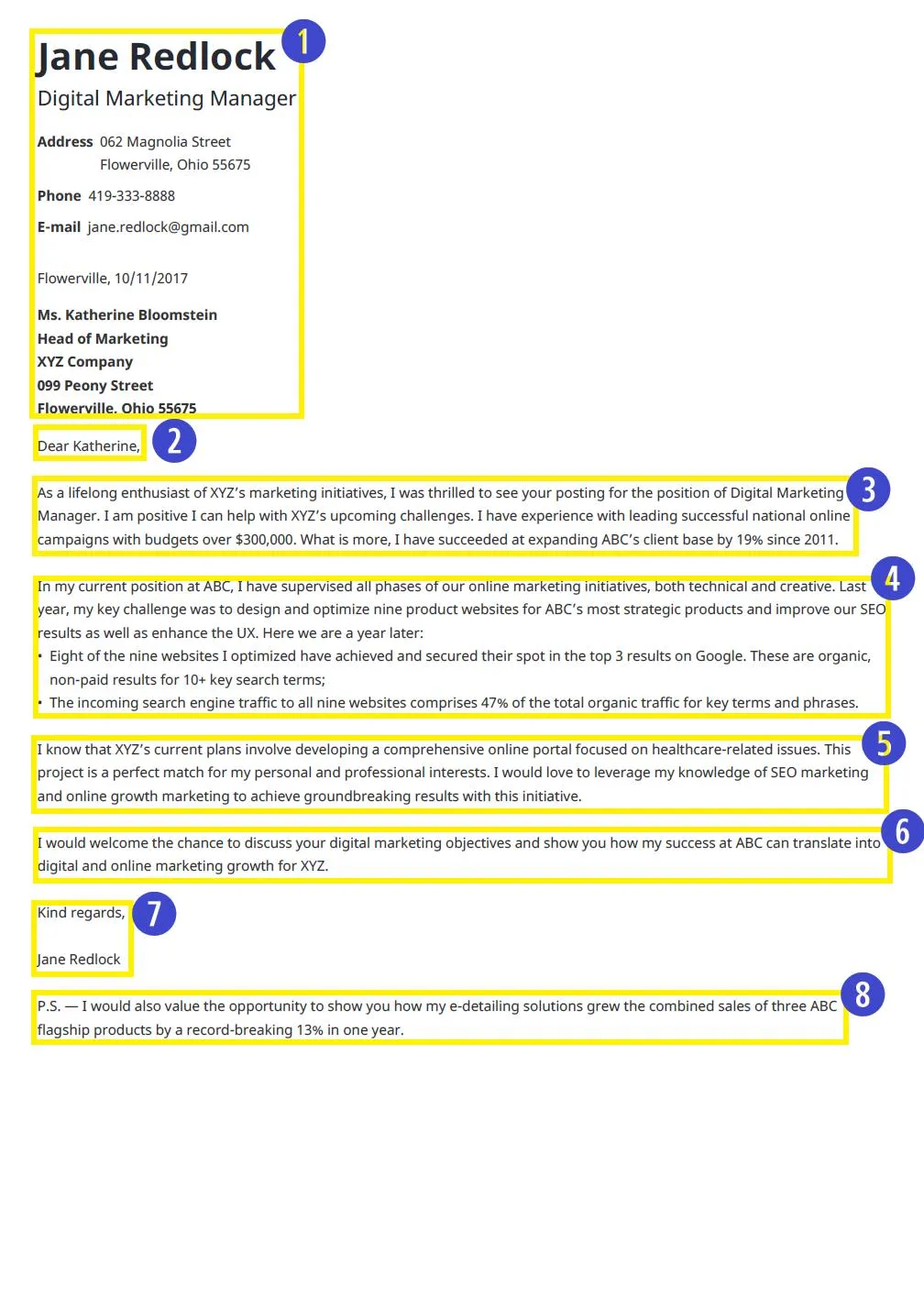
Quantifying your achievements makes your cover letter more compelling and persuasive. Instead of simply stating your responsibilities, provide specific, measurable results that showcase your accomplishments. Use numbers, percentages, and data to demonstrate the impact of your work. For example, instead of saying “Improved customer satisfaction,” state “Increased customer satisfaction scores by 15%.” Use quantifiable results whenever possible to make a strong impact. Be specific about what you achieved, and include details such as the timeframe, the methods you used, and the impact your actions had. This provides concrete evidence of your abilities and helps the hiring manager understand your value. Quantifying your achievements adds credibility to your claims and helps you stand out. Whenever possible, quantify the results of your work using concrete data and metrics to validate your impact.
Showcasing Your Personality and Enthusiasm
Your cover letter is an excellent opportunity to showcase your personality and enthusiasm. While it is important to remain professional, letting your personality shine through can help you connect with the hiring manager and make your application more memorable. Use a tone that is authentic and engaging, and express your genuine interest in the position and the company. Talk about what excites you about the role and why you are a good fit for the organization’s culture. Showcasing your enthusiasm can make your application stand out, as it shows you are not only qualified but also genuinely interested. Avoid sounding generic or overly formal, and inject a touch of your unique perspective. By expressing your enthusiasm and personality, you can make your cover letter more memorable and show the hiring manager that you would be a great addition to the team. The tone should match the company’s culture.
Writing a Strong Closing Paragraph
The closing paragraph of your cover letter should leave a lasting positive impression. Express your gratitude to the hiring manager for considering your application and reiterate your interest in the position. Clearly state your next steps. Indicate your availability for an interview and how they can contact you. Keep it professional, concise, and enthusiastic. This section is your final opportunity to leave a positive impression, so make sure to summarize your key qualifications and reiterate your excitement for the opportunity. Reiterate your interest, express gratitude, and include a clear call to action. This will help to move your application forward. Always proofread the closing paragraph and all other sections of your cover letter for any typos or grammatical errors.
Expressing Gratitude and Next Steps
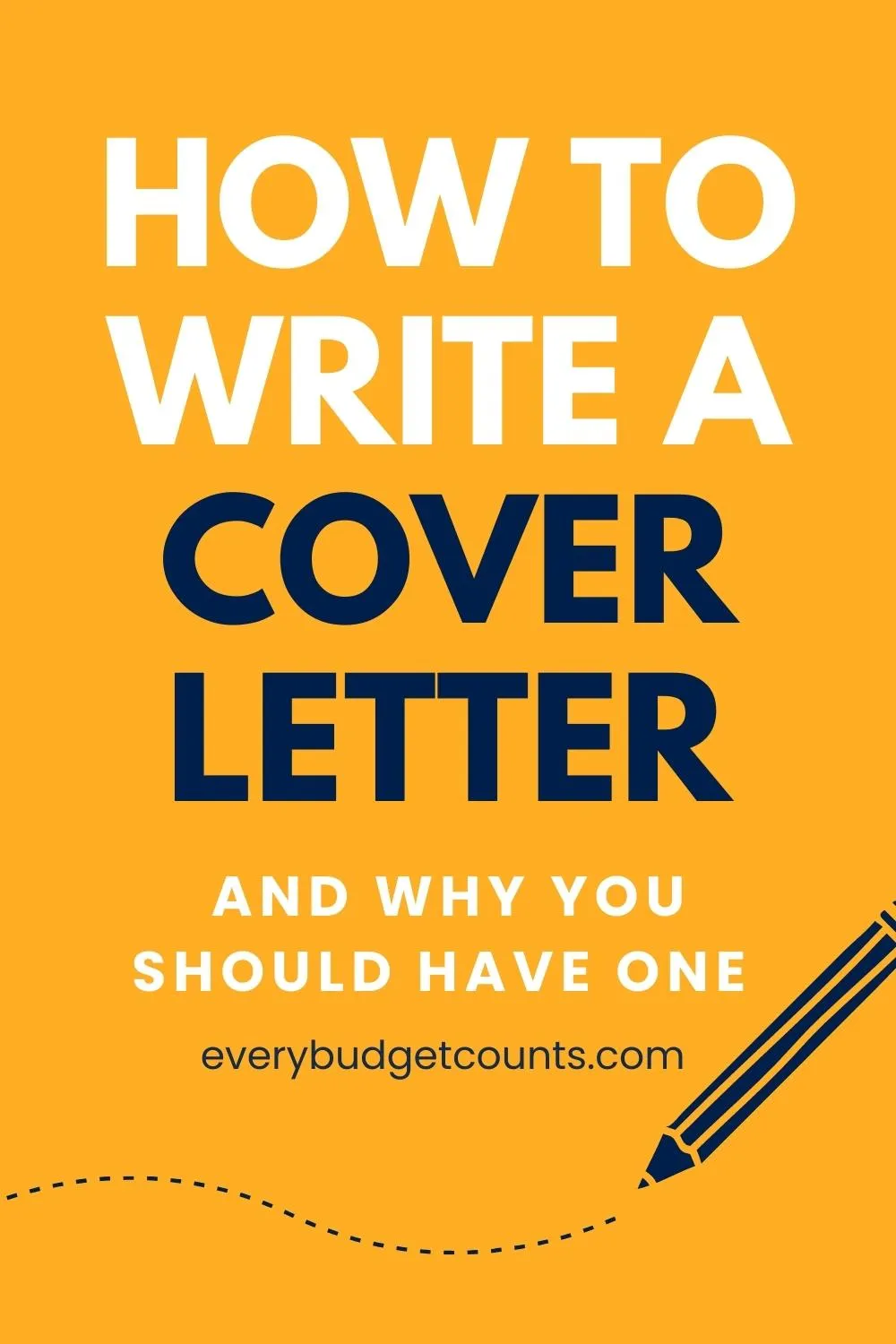
In your closing paragraph, expressing your gratitude for the hiring manager’s time and consideration is essential. Thank them for reviewing your application. Reiterate your enthusiasm for the opportunity and the company. Clearly state what steps you expect to take next, such as your availability for an interview, and how they can contact you. You can also offer a follow-up, such as “I look forward to hearing from you and discussing my qualifications further.” Make sure your closing paragraph is professional, concise, and enthusiastic. This section of your cover letter can influence the impression you leave on the hiring manager. Include an invitation to contact you for an interview and provide your contact details once again. A well-crafted closing paragraph is an important element to making a lasting positive impression and securing an interview.
Cover Letter Formatting Best Practices
Formatting your cover letter correctly is essential for readability and professionalism. Choose a professional font, such as Times New Roman, Arial, or Calibri, with a font size between 10 and 12 points. Use a simple, clear layout with consistent margins, typically one inch on all sides. Ensure your letter is well-spaced and easy to read. Break up large blocks of text with paragraphs and use bullet points when listing skills or achievements. A well-formatted cover letter is easy to read and visually appealing, enhancing your overall professionalism. Before sending your application, double-check the formatting. Proper formatting demonstrates attention to detail, and shows respect for the reader. This is an important step towards making a good first impression and making it easier for the hiring manager to process your application.
Font and Style Guidelines
Selecting the appropriate font and style is important for both readability and professionalism. Choose a standard, easy-to-read font like Times New Roman, Arial, or Calibri. These fonts are widely accepted and can be easily viewed on different systems. The font size should typically be between 10 and 12 points, which strikes a balance between readability and fitting your content on the page. Use a consistent font style throughout the cover letter. Avoid using multiple fonts, fancy scripts, or fonts that are difficult to read. Keep the formatting clean and professional. Avoid any distractions such as excessive use of bolding, italics, or underlining. Your goal is to present your information in a clear and organized manner.
Length and Structure

Keep your cover letter concise and focused, aiming for a length of no more than one page. Hiring managers often have many applications to review, so brevity is crucial. Structure your letter logically with clearly defined paragraphs. Begin with an engaging opening, followed by sections that highlight your relevant skills and experiences, and a strong closing. Each section should serve a specific purpose. Keep paragraphs short and to the point, using clear and concise language. Use bullet points to highlight key skills, achievements, or responsibilities. This helps break up the text and makes it easier to read. Structure your cover letter to make a positive impression on the reader while keeping the content easy to scan. Proper structuring will increase your chances of securing an interview.
Proofreading and Editing Checklist
Proofreading and editing are critical steps in the cover letter writing process. Before submitting your cover letter, carefully review it for any typos, grammatical errors, and inconsistencies. Run a spell check and grammar check, but also read it yourself to ensure it flows logically and makes sense. Check for clarity and conciseness; every sentence should serve a purpose. Have someone else read your cover letter. Another set of eyes can catch errors you might have missed. Verify all contact information and company details. Pay attention to the tone, ensuring it is professional, enthusiastic, and appropriate for the role. A polished and error-free cover letter is essential for making a strong first impression. A well-edited cover letter shows that you pay attention to detail and value accuracy.
Common Cover Letter Mistakes to Avoid
Avoiding common cover letter mistakes is crucial for making a positive impression and maximizing your chances of success. One of the most significant errors is submitting a generic cover letter. Generic content, lack of personalization, and not tailoring your letter to the specific job requirements are immediate red flags. Ensure your letter is customized for the specific role. Another common mistake is including typos, grammatical errors, and formatting issues. Proofread your cover letter carefully. Ignoring the job description is another major error. Failing to address the key skills and qualifications the employer is seeking shows a lack of attention to detail. By avoiding these common pitfalls, you can create a cover letter that effectively showcases your qualifications and makes a compelling case for your candidacy.
Generic Content and Lack of Personalization
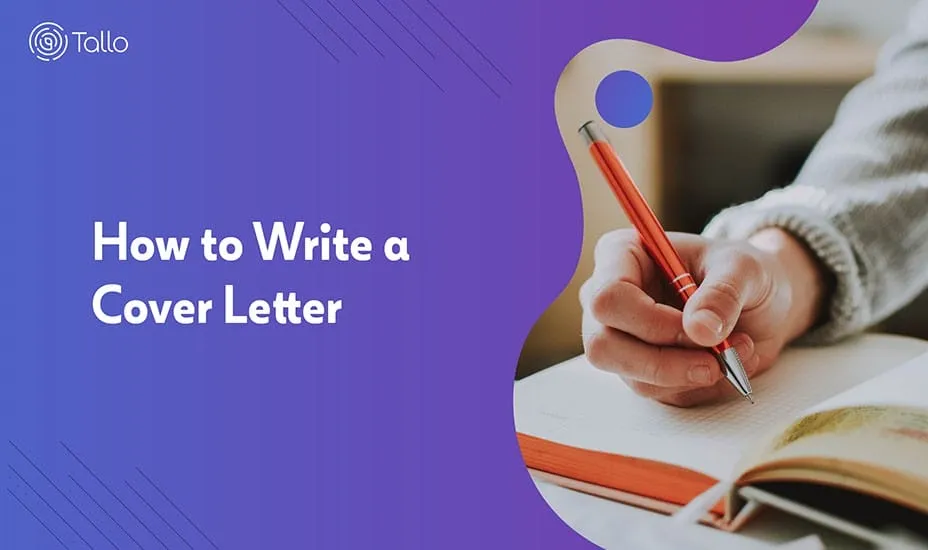
Generic content and a lack of personalization are among the biggest mistakes you can make when writing a cover letter. Sending a generic cover letter that could apply to any job demonstrates that you haven’t taken the time to understand the role or the company. Customize your cover letter for each application. Research the company and the specific job requirements, and tailor your letter to address those needs directly. Show the hiring manager that you understand the position and how your skills and experience align with their needs. Use the same keywords and phrases from the job description and provide specific examples that demonstrate your ability to succeed. A personalized cover letter demonstrates your genuine interest in the opportunity and makes your application stand out. The more tailored your cover letter is, the better your chances of getting noticed.
Typos and Grammatical Errors
Typos and grammatical errors can immediately undermine your credibility and professionalism. A cover letter filled with errors suggests a lack of attention to detail and a lack of care. Proofread your cover letter carefully. Run a spell check and grammar check, but don’t rely on these tools alone. Read the cover letter yourself, and ask someone else to proofread it as well. Check for punctuation mistakes, incorrect word usage, and awkward phrasing. Always double-check the names of people and companies. Avoid any errors. A polished and error-free cover letter demonstrates your professionalism and shows the hiring manager that you take your application seriously.
Ignoring the Job Description
Ignoring the job description is a common mistake that can immediately disqualify your application. The job description provides essential details about the role, including the required skills, experience, and qualifications. Your cover letter should directly address these requirements. Carefully analyze the job description and identify the key skills and qualifications the employer is seeking. Use the same keywords and phrases from the job description to demonstrate that you possess the required skills. Highlight how your skills and experiences align with their specific needs. Provide specific examples that demonstrate your ability to meet those needs. A cover letter that does not address the job description shows a lack of attention to detail and a lack of understanding of the role. Demonstrate that you understand what the company is looking for, making you a strong candidate for the position.
Cover Letter Examples and Templates
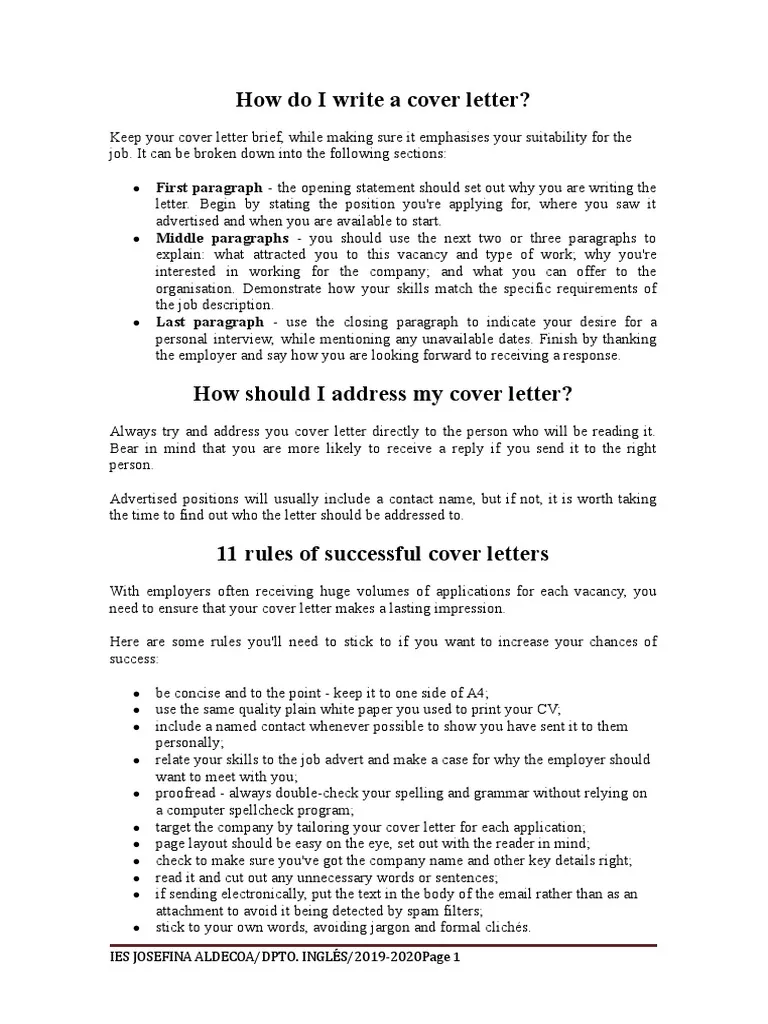
Utilizing cover letter examples and templates can provide valuable guidance as you write your own. Examples offer insights into the structure, style, and content of effective cover letters. Templates provide a ready-made framework that you can customize to fit your own circumstances. When using examples and templates, tailor them to fit your skills, experience, and the specific job you are applying for. Don’t simply copy and paste; personalize the content to reflect your unique qualities and qualifications. Adapt the templates to reflect your industry, the specific role, and the company’s culture. Remember, the goal is to showcase your value and make a strong impression. By thoughtfully adapting examples and templates, you can save time and effort while producing a compelling cover letter that increases your chances of securing an interview. Look for examples that closely match your industry and experience.
Example Cover Letter for Different Industries
Cover letter examples tailored to different industries can provide valuable insights and guidance. Each industry has its own conventions and expectations, and understanding these is crucial for creating a compelling cover letter. For example, a cover letter for a creative role might be more focused on showcasing your creativity and personality, while a cover letter for a technical role might emphasize your technical skills and experience. Review examples from your industry to understand the common language, tone, and format. Search online for examples specific to your field. Pay attention to the examples used and modify the content to reflect your own skills and experience. Customize the template to fit your unique qualities. Industry-specific examples can also help you understand the language and requirements, helping you to communicate more effectively with the hiring manager.
Where to Find Cover Letter Templates
Numerous resources offer cover letter templates that can assist you in creating a professional and well-structured application. Online job sites, career websites, and Microsoft Word are just a few places where you can find these templates. When selecting a template, make sure it is appropriate for your industry, experience level, and the specific job you are applying for. Templates can save you time and effort by providing a ready-made framework for your cover letter. Ensure the template is customizable, allowing you to personalize the content to reflect your own skills, experience, and the requirements of the job description. Do not simply copy and paste. Instead, customize the template to reflect your unique qualities. You can then tailor the template to match your needs, ensuring that it highlights your unique value. Using a well-designed template can provide a professional foundation for your cover letter, while allowing you to focus on crafting compelling content.
Advanced Cover Letter Strategies
Implementing advanced cover letter strategies can help you stand out and increase your chances of success. One effective strategy is using keywords effectively to increase your chances of your cover letter being seen. The job description should be used when writing your cover letter. Another advanced strategy is to address salary expectations in a professional manner, if appropriate. Follow-up strategies are a final critical part of the process. Implementing advanced cover letter strategies can significantly boost your chances of securing an interview and landing your dream job. This will give you a competitive edge.
Using Keywords Effectively
Using keywords effectively is an essential strategy for maximizing your chances of getting noticed by both human recruiters and Applicant Tracking Systems (ATS). Analyze the job description carefully and identify the key skills, qualifications, and keywords the employer is seeking. Then, strategically incorporate these keywords throughout your cover letter, especially in your opening paragraph, the body of the letter, and any skill-based sections. This will help your cover letter align with the job requirements and demonstrate your qualifications. Ensure you use the keywords naturally. Avoid keyword stuffing. Focus on conveying your relevant skills and experiences while meeting the ATS requirements. Keywords help to make your cover letter relevant to the job description. A strategically keyworded cover letter ensures that your application is visible and demonstrates that you are a good fit for the role.
Addressing Salary Expectations
Addressing salary expectations in your cover letter is sometimes necessary, particularly if the job posting requests it. If the job posting asks for your salary requirements, respond professionally and thoughtfully. Research industry standards and the salary range for similar positions in your location. State your salary expectations clearly and provide a range. Use the opportunity to express your value and your desire to be fairly compensated. If the job posting does not mention salary requirements, it is typically best to omit the topic from your cover letter. If you feel it is necessary, you can mention that your salary expectations are competitive and negotiable. Do your research to determine what the industry is paying for similar roles. Mentioning a salary can make the process faster.
Follow-Up Strategies after Submission
After submitting your cover letter, follow-up strategies are an important part of the job application process. Typically, you should wait about a week to ten days after submitting your application before following up. A follow-up shows your continued interest in the position and can help you get your application noticed. Sending a brief, polite email to the hiring manager or recruiter, reiterating your interest in the role and inquiring about the status of your application can show your interest. Tailor your follow-up to each application, referring to specific skills or experience. If you have received a rejection, use the experience to learn and refine your approach. Follow-up efforts should be professional and respectful. Always thank the hiring manager for their time. Following up shows that you are enthusiastic and genuinely interested in the position, and it can significantly increase your chances of moving forward in the hiring process. Keep track of your follow-up efforts for your records.
